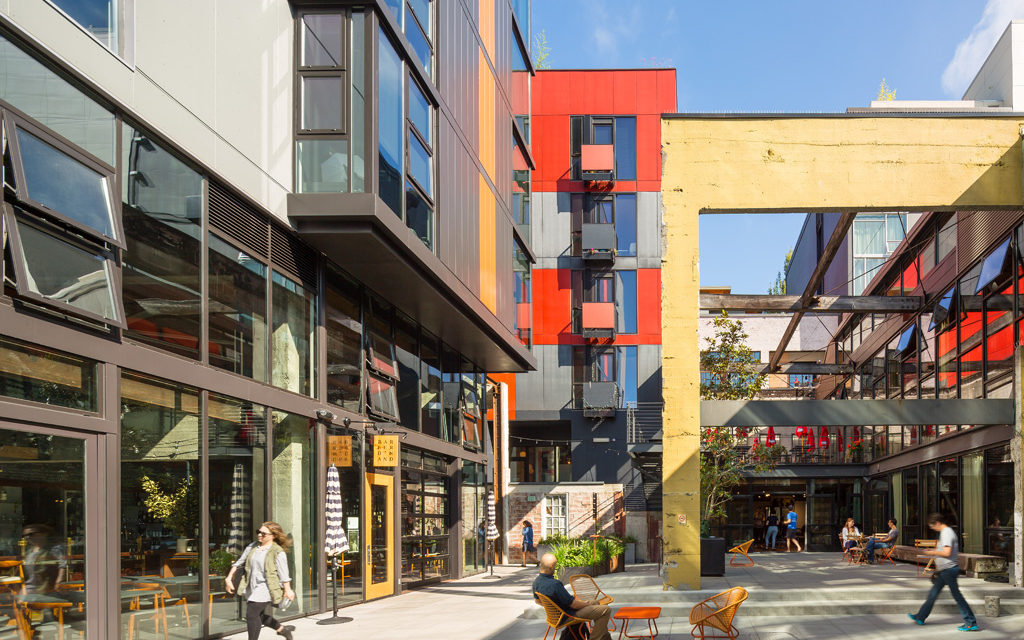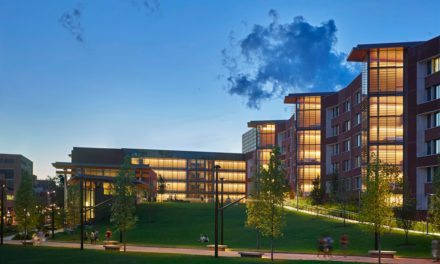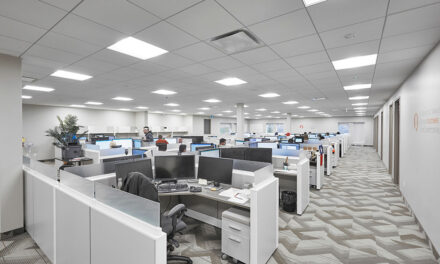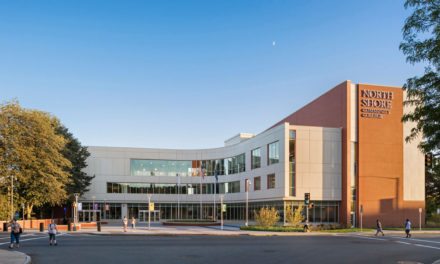Chophouse Row is conceived as a way to merge past, present and future; repurposing existing structures and knitting new and old together in a forward-looking prototype that stimulates and supports its neighborhood. Created from a collection of contiguous properties within a single block in Seattle’s Capitol Hill neighborhood, the design puts in place the last phase of a larger vision and master plan developed by the client. Rather than consider the eclectic mix of buildings and empty space an impediment to development, the owner recognized the value of the structures’ hard-won patina and unique character. By integrating a diverse, mutually-supportive combination of activities that includes living, working, and retail in one contiguous array of spaces, the development results in a village within a village.
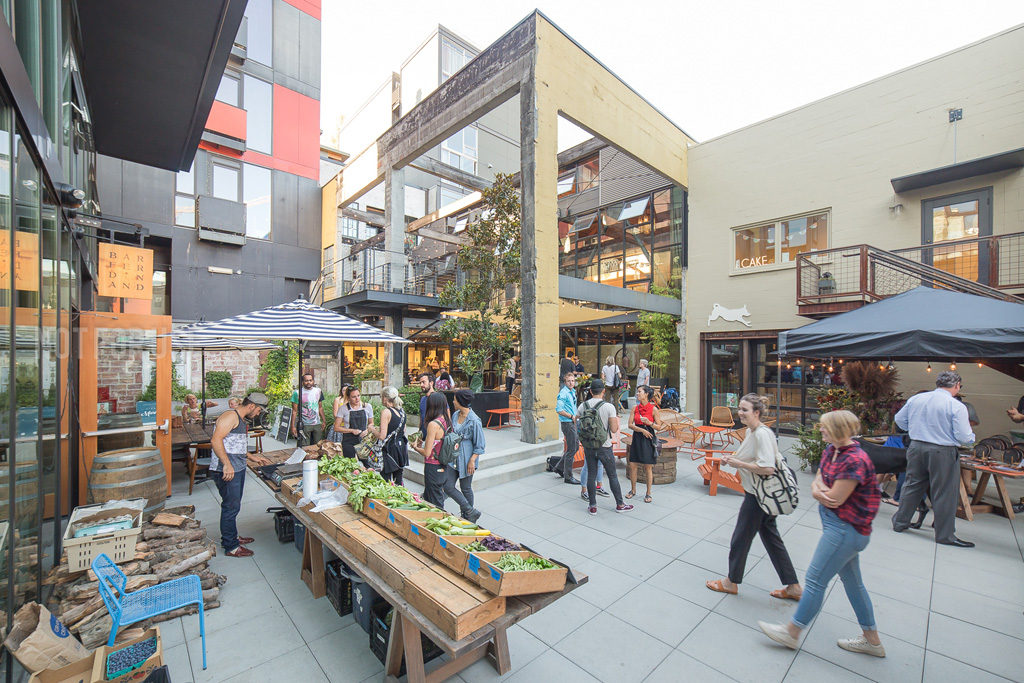
Credit: Tony Kim
The design solution knits these disparate properties together via new pedestrian corridors and connections between old and new space to create a truly mixed-use project. Challenges for the project included resolving the eleven-foot change in elevation between the east and west boundaries of the site, interweaving old and new structures, and stacking mixed-uses in the same building, including live/work/retail/parking. Public spaces and connections to other buildings on the block are born through the strategic removal of existing parts of buildings—back doors become front doors, and open space is created from previously solid edges. Materials removed during demolition find a second life as siding, flooring, stair treads, and windows.
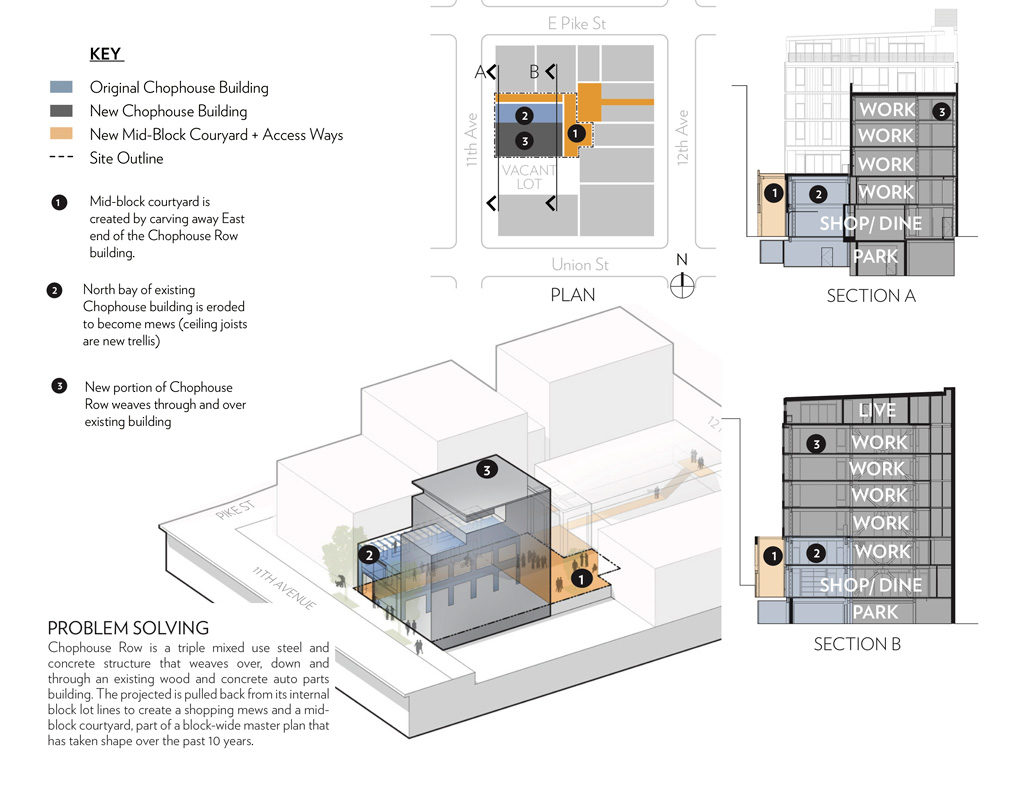
Remnant structural elements create an open framework that visually and physically organizes the new public spaces, including the mid-block courtyard and a narrow passageway. The passageway, dubbed The Mews—a playful reference to the horseless carriage businesses that operated out of the building—is slotted between two of the structures and lined with small shops and restaurants in addition to back-door connections to existing businesses. Topped with wood joists that have been exposed through selective deconstruction, the pedestrian alley provides a respite from the busy streets of the surrounding neighborhood. A 1,200 square-foot courtyard, created in the middle of the block, connects newly revealed backsides of buildings. With twelve distinct points of entry, this mid-block development encourages round-the-clock activity.
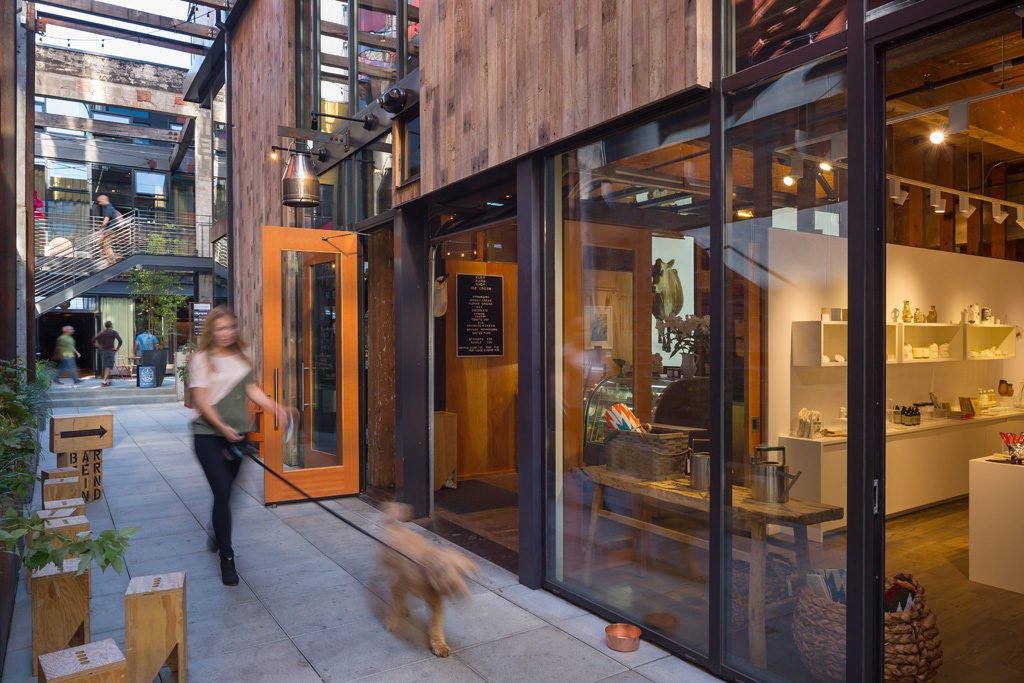
Credit: © Lara Swimmer
The five-story addition (plus two mezzanine levels) essentially merges with the existing Chophouse—the roof deck of the old building becomes the floor of an office in the new building. Blending between old and new extends throughout the project, resulting in a single building type classification for the project. This attitude is evident in tenant spaces as well, especially those at the ground floor, where individual restaurants and retail shops occupy both old and new space. Naturally ventilated, the 43,800 square-foot project features a series of loft-like floors and adjoining decks and balconies that provide territorial views to the neighborhood and back into the site. The result is a human-scaled destination that is distinguished through its insistence upon incremental urbanism rather than large-scale monoculture.
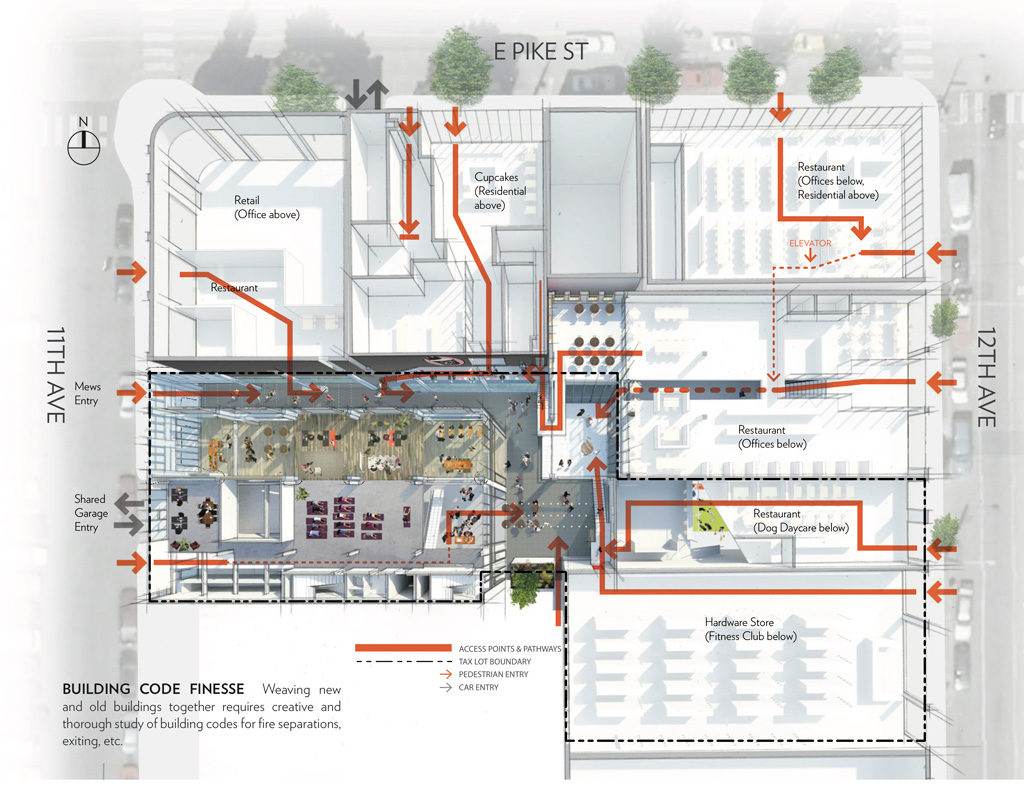
Chophouse Row: Sundberg Kennedy Ly-Au Young Architects (executive architect/design collaborator) and Graham Baba Architects (design collaborator)
Tenant improvements for Cloud Room, Tectonic, Glympse, and Mazlo: Graham Baba Architects
Tenant improvements for penthouse apartments: Sundberg Kennedy Ly-Au Young Architects and Graham Baba Architects (design collaborators)
Developer and Financing: Dunn & Hobbes LLC (developer); Heartland LLC (capital partner); HomeStreet Bank (financing)
Contractor: MRJ Constructors (contractor)
Consultants: Framework (urban design and master planning advisor); Michelle Arab Studio (landscape design); Michael Pacquette (interiors for Cloud Room); FIX (construction project manager); MA Wright Structural Engineers (structural); KPFF Consulting Engineers (civil); RDH (building envelope); PanGeo (geotechnical engineering): T.A. Kinsman Consulting (code consulting); Merit Mechanical (mechanical and plumbing); Sea-Tac Electric (electrical)
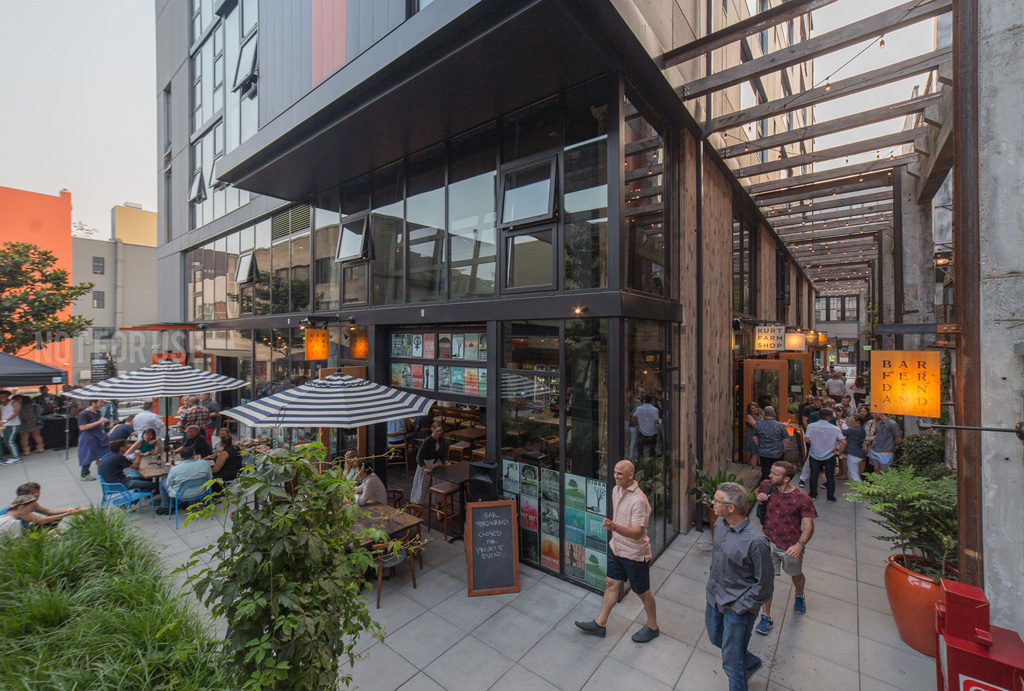
Credit: Tony Kim
SKL Architects
Sundberg Kennedy Ly-Au Young Architects (SKL Architects) is a Seattle-based team of architects, designers, and artists with a passion for projects that give more than they take–to clients and communities that depend upon them and the environment that sustains them. The firm works nationwide on a wide variety of projects, from residences to academic and cultural institutions, and has consideration experience with the challenges of adaptive re-use projects. Notable projects include the Westside School, and Chophouse Row in Seattle; the Texas Art House in Houston; and the Kalmiopsis Family Retreat in Southern Oregon. www.sklarchitects.com
Graham Baba Architects
Graham Baba Architects is a Seattle-based architecture firm recognized for the successful place-making of commercial, residential, and cultural spaces. Whether enlivening an urban community or creating a quiet refuge, we strive to design venues that resonate with memory and a sense of discovery. the firm believes every project—from adaptive reuse of existing buildings to new construction—provides an opportunity to reveal and celebrate authentic materials in their natural state. Founded in 2006, the firm began its existence creating signature spaces for some of Seattle’s top chefs, including restaurants for a number of James Beard Award winners and nominees. Today, the firm’s work is diverse, encompassing residences to adaptive reuse projects, and stand-alone buildings to tenant improvements. Project can be found across the West Coast and central US, with new projects to be located in New Jersey and New York. Among the firm’s notable projects are the Melrose Market, Kolstrand Building, and 325 Westlake in Seattle; Pybus Market in Wenatchee, Washington; and the Washington Fruit & Produce Co. Headquarters in Yakima, Washington. Most recently the firm completed the studio for artist Lino Tagliapietra in Seattle, and the Hanger, a community building for the City of Kenmore, Washington. www.grahambabaarchitects.com

